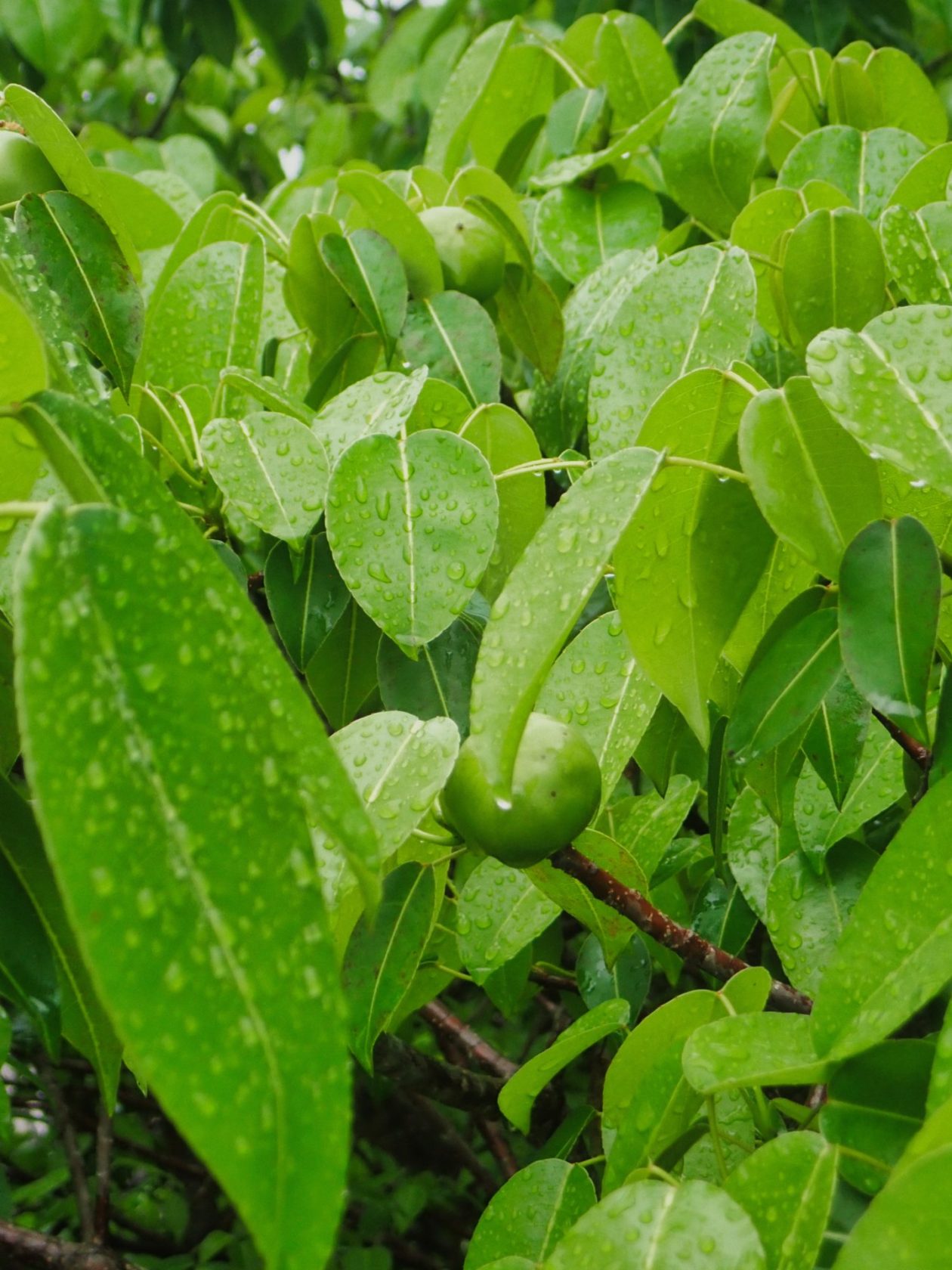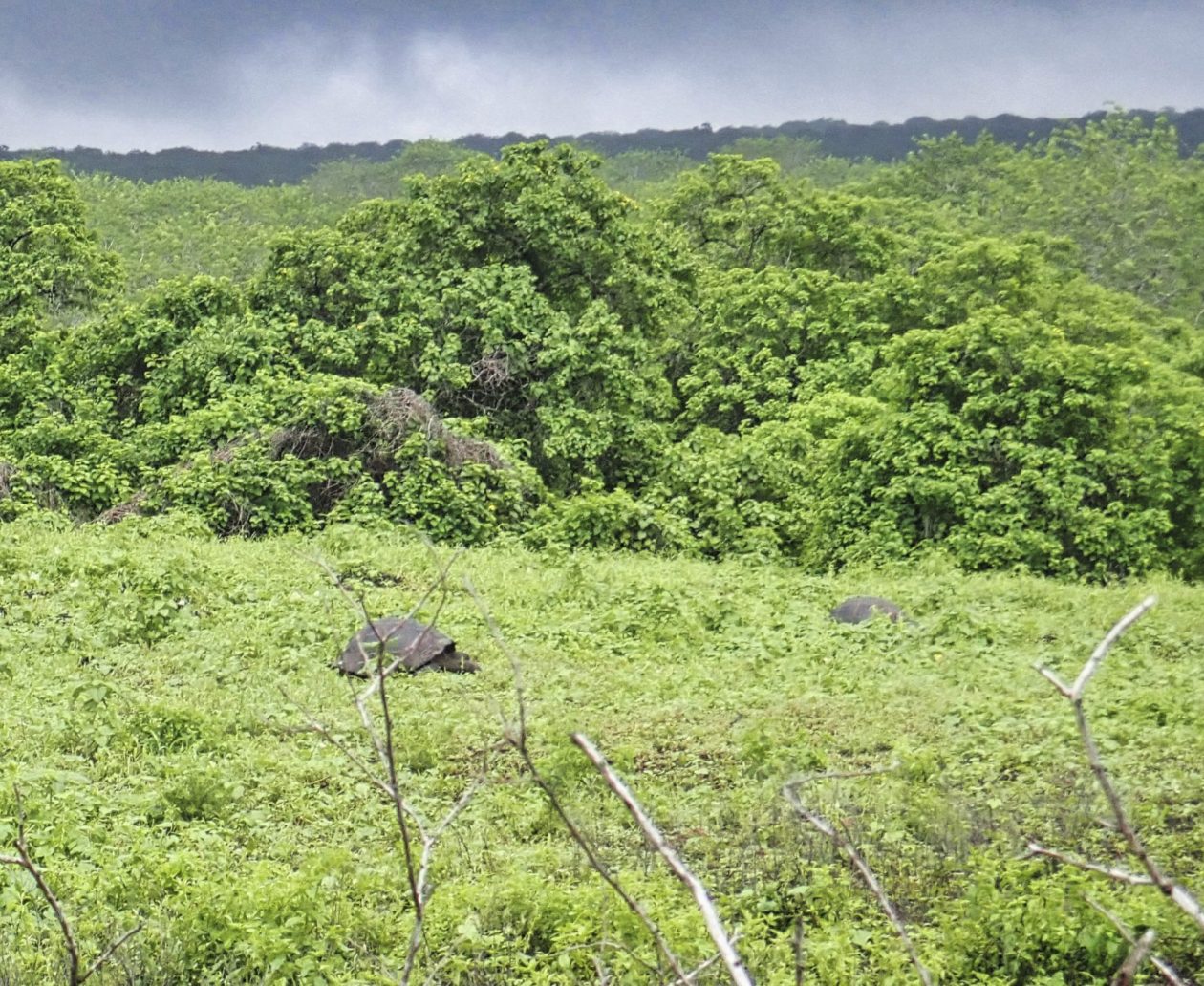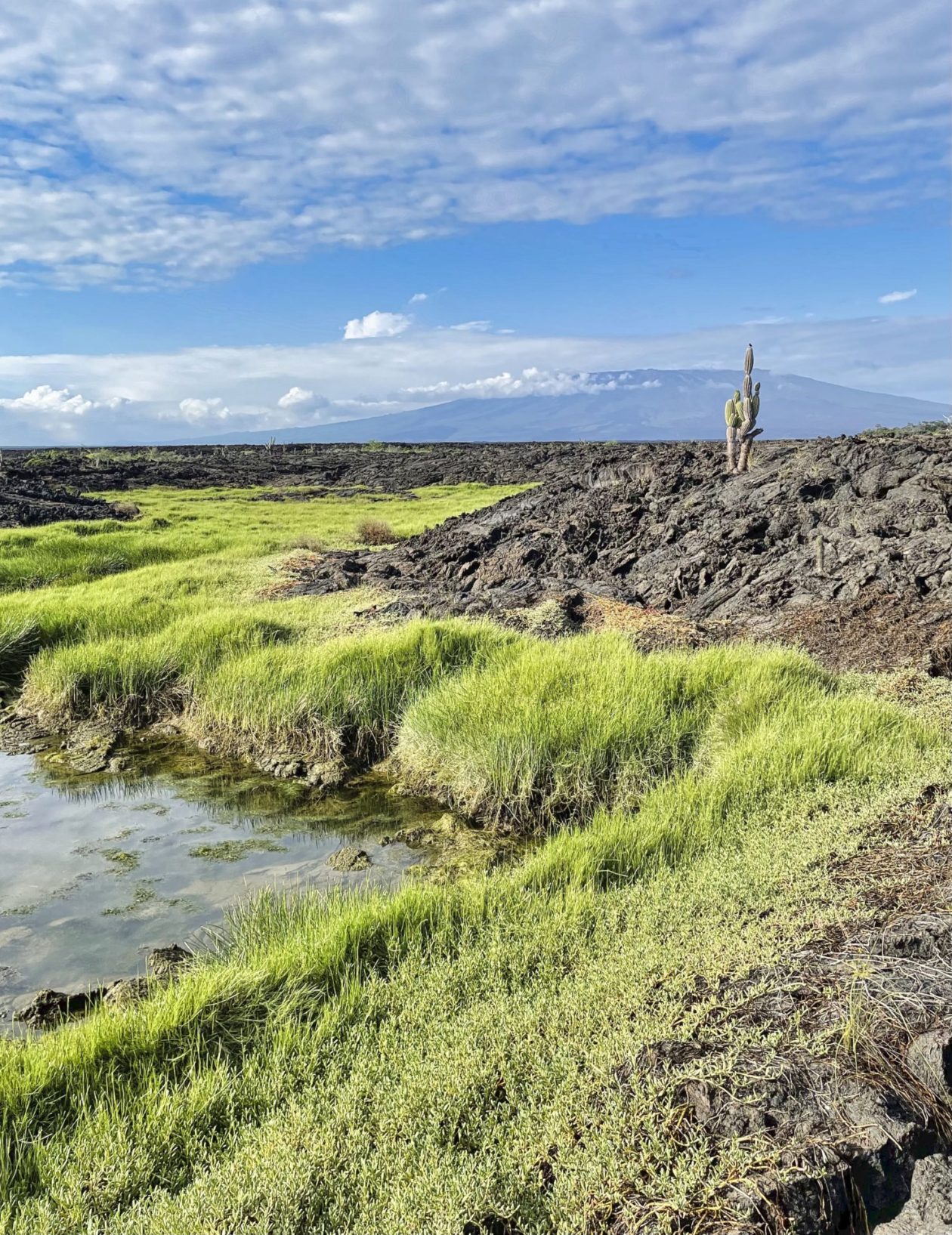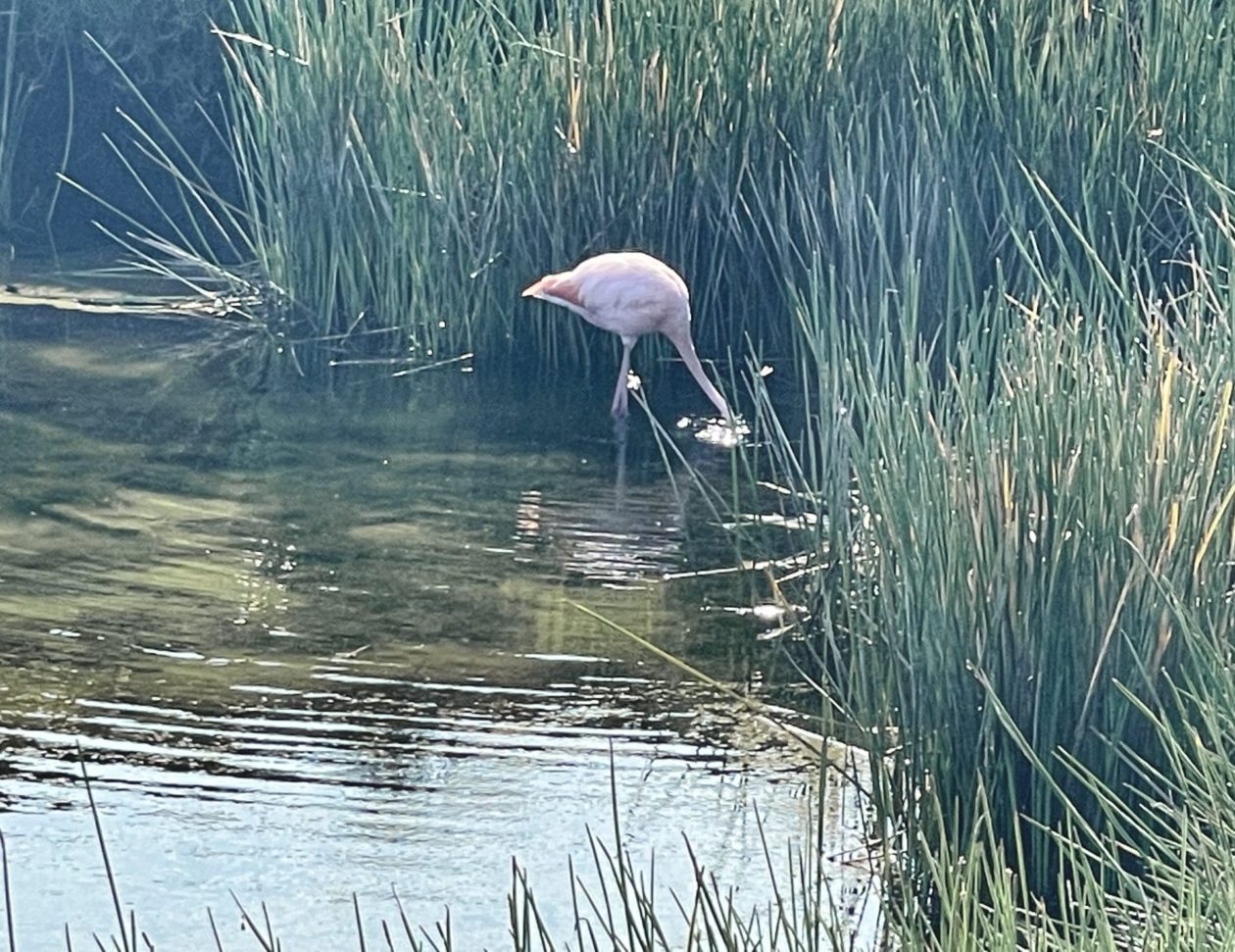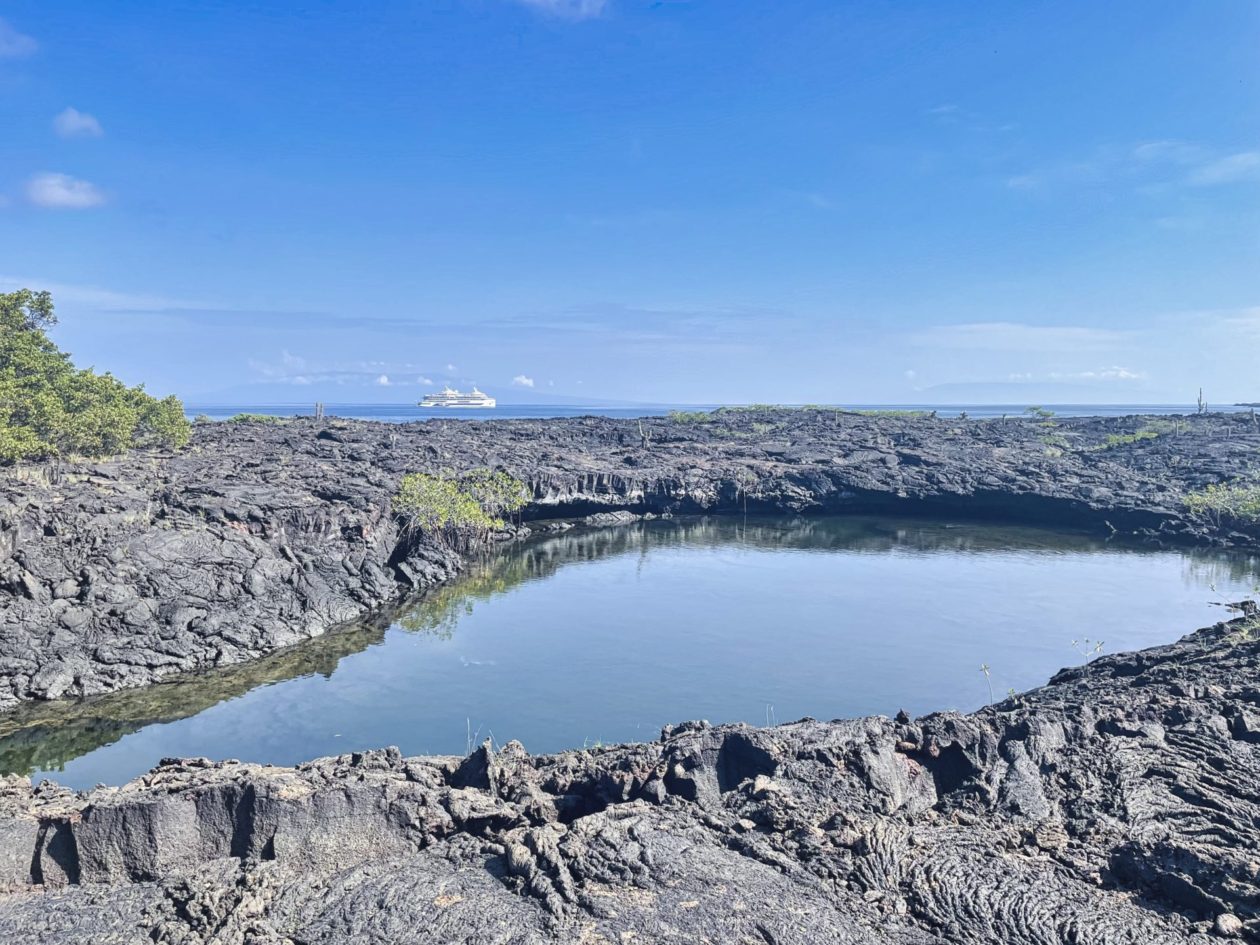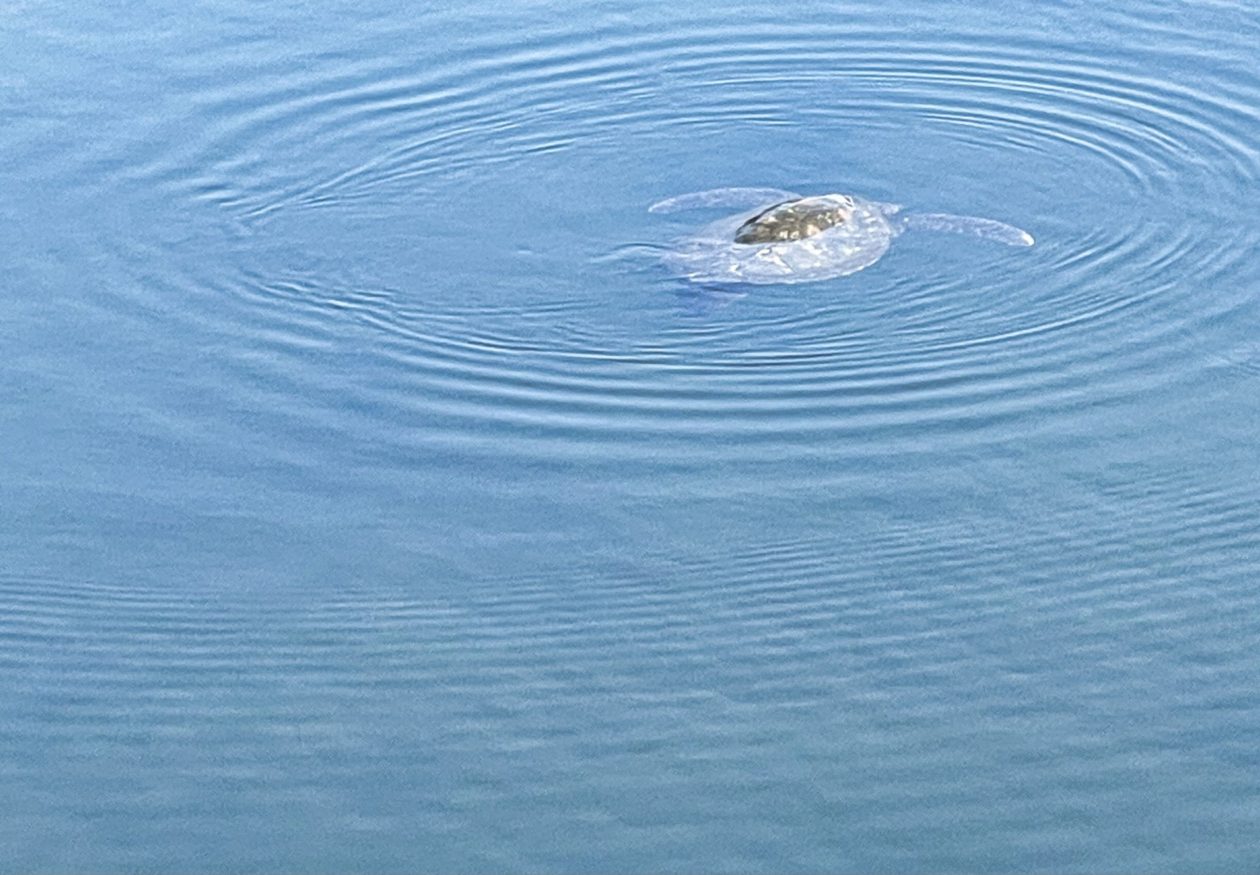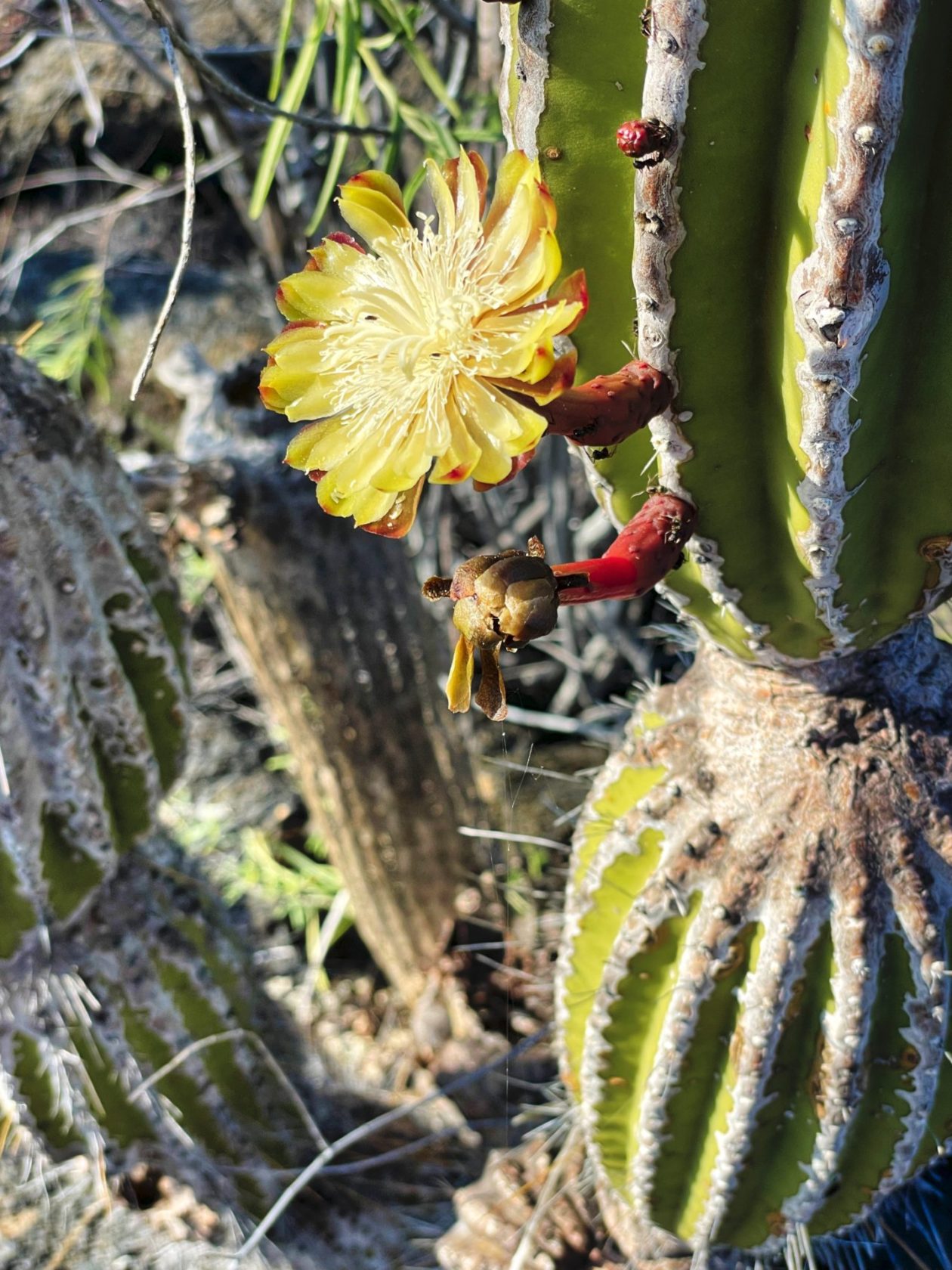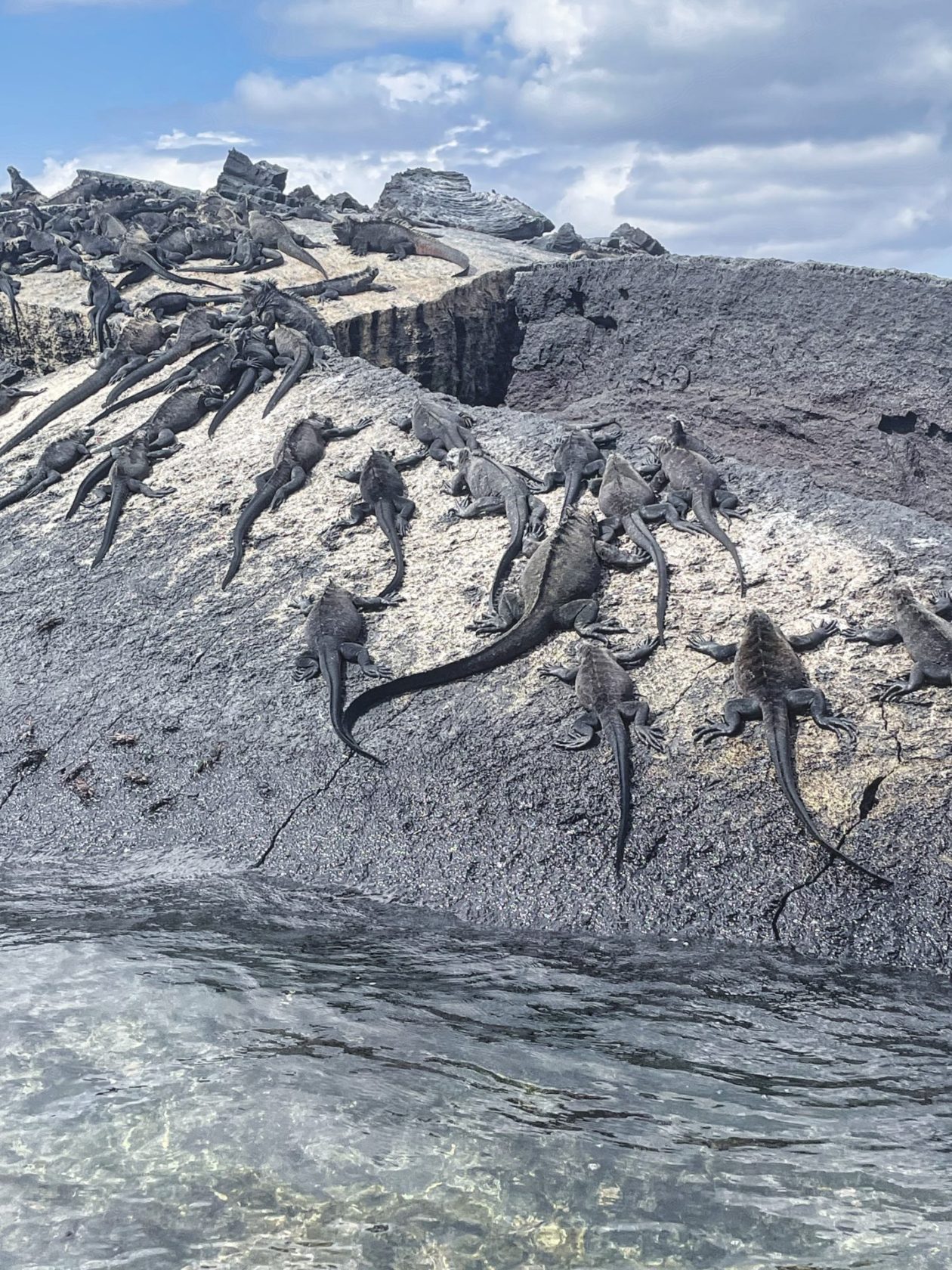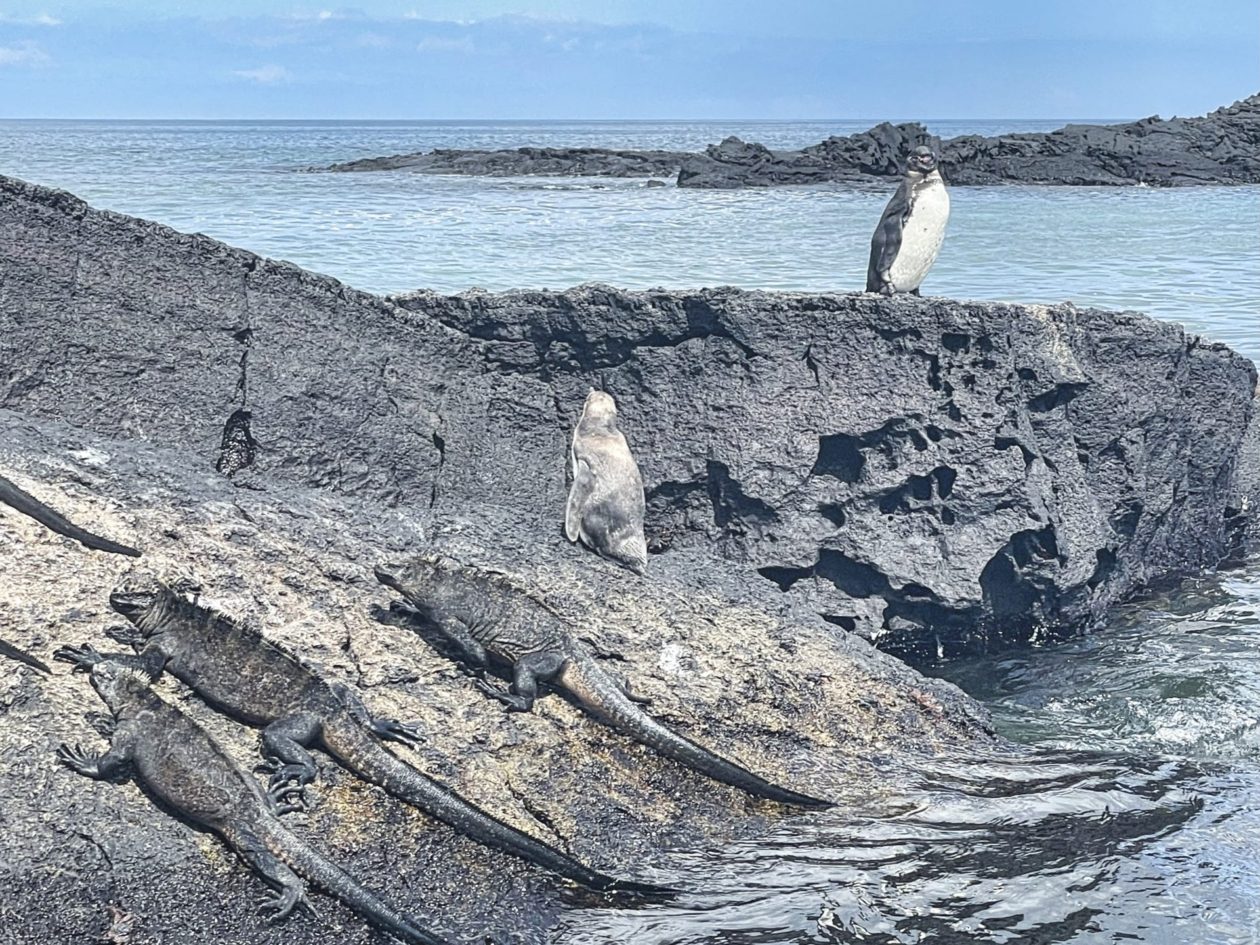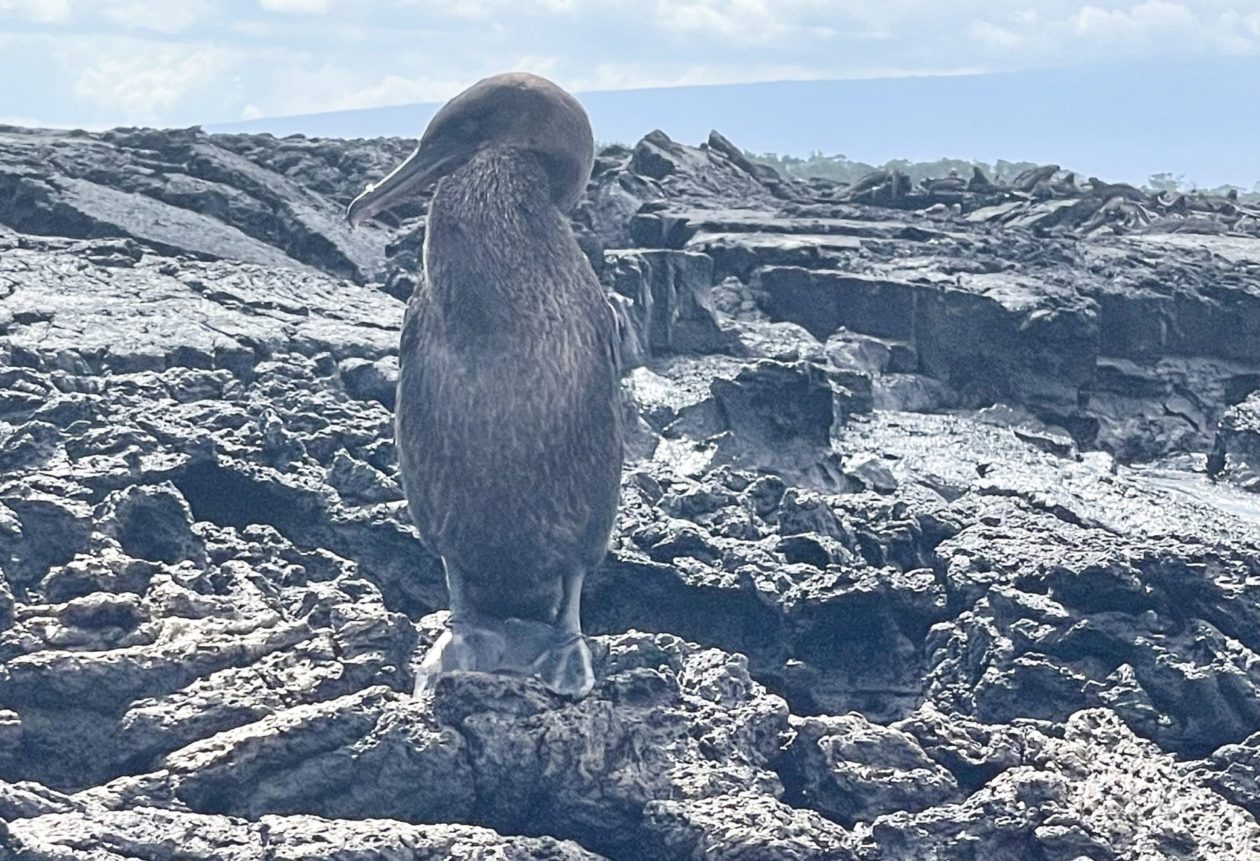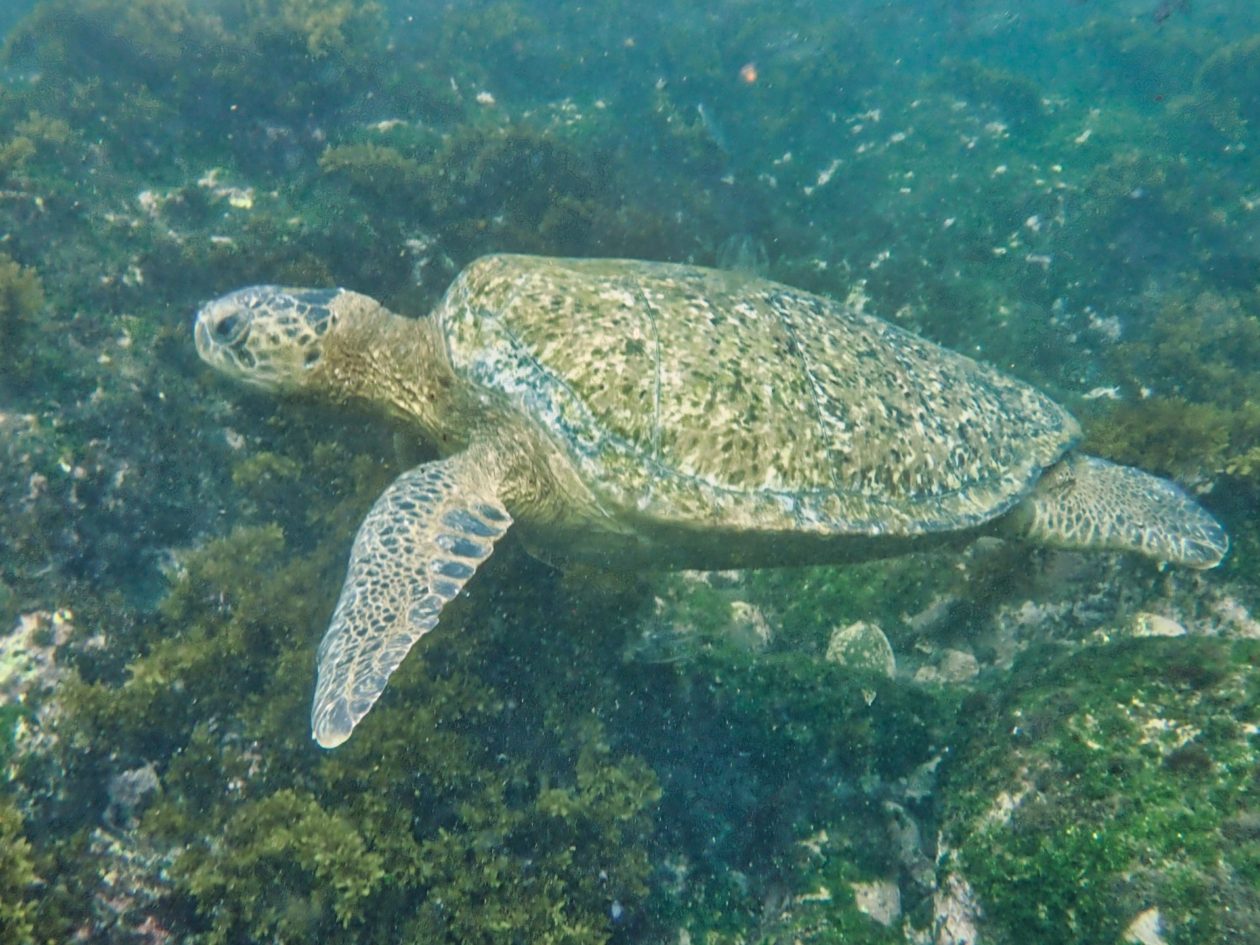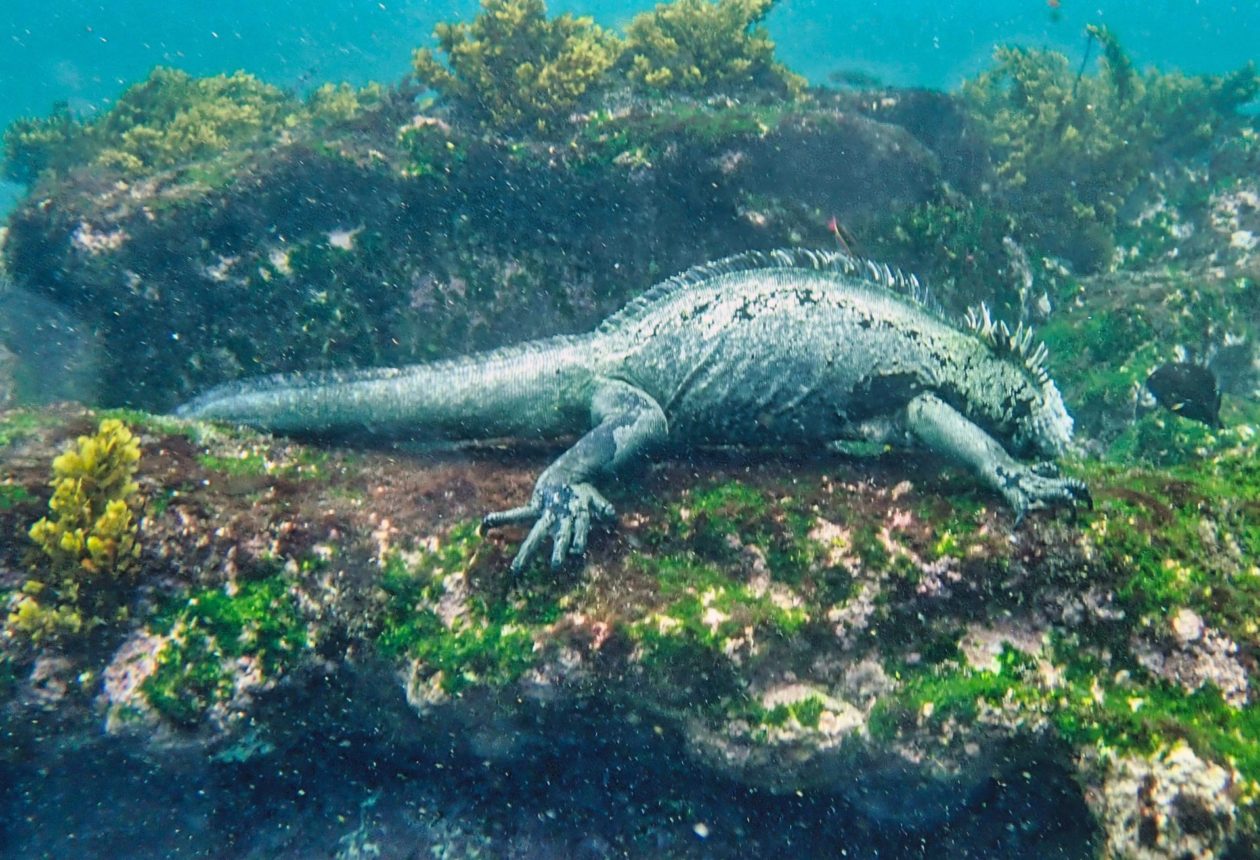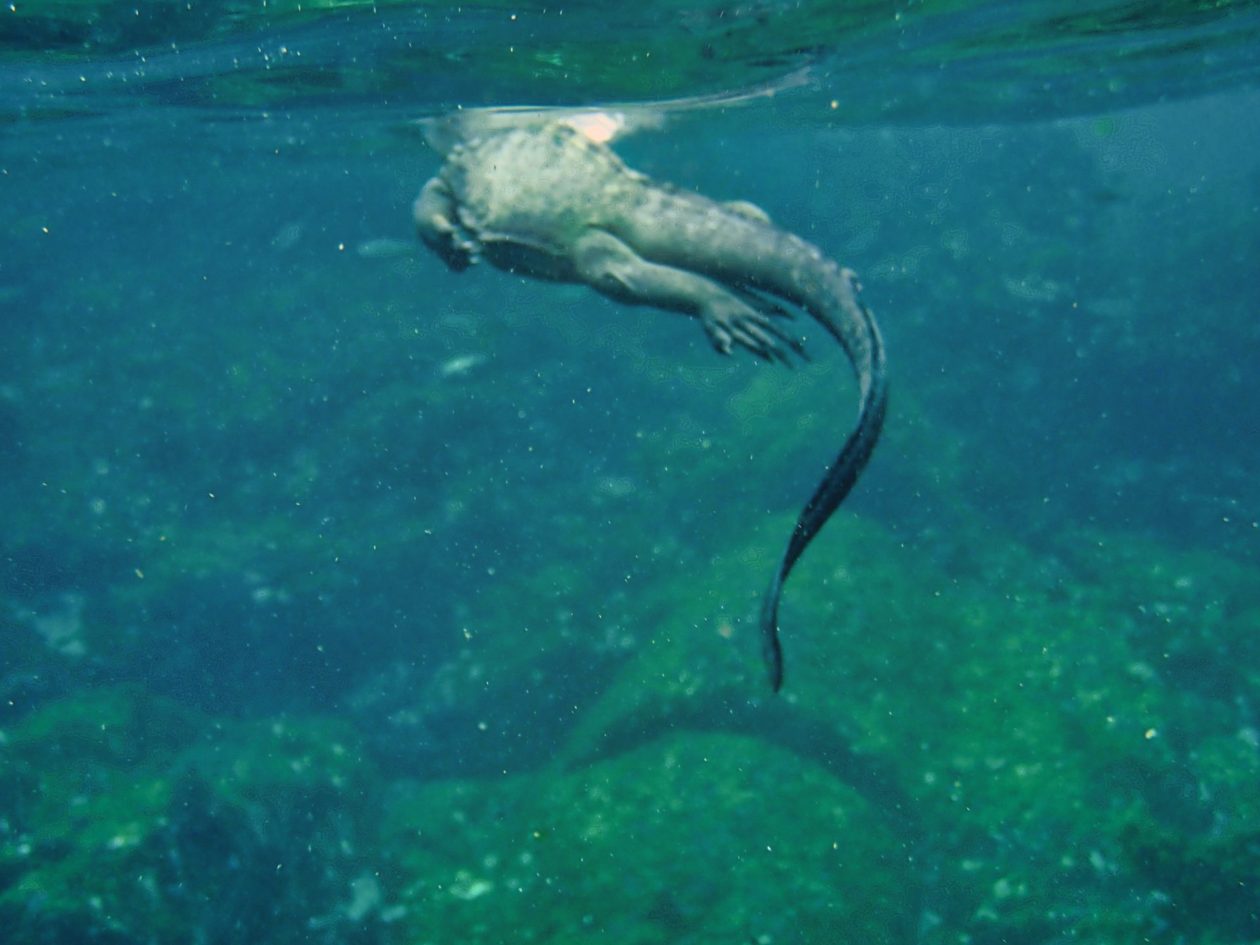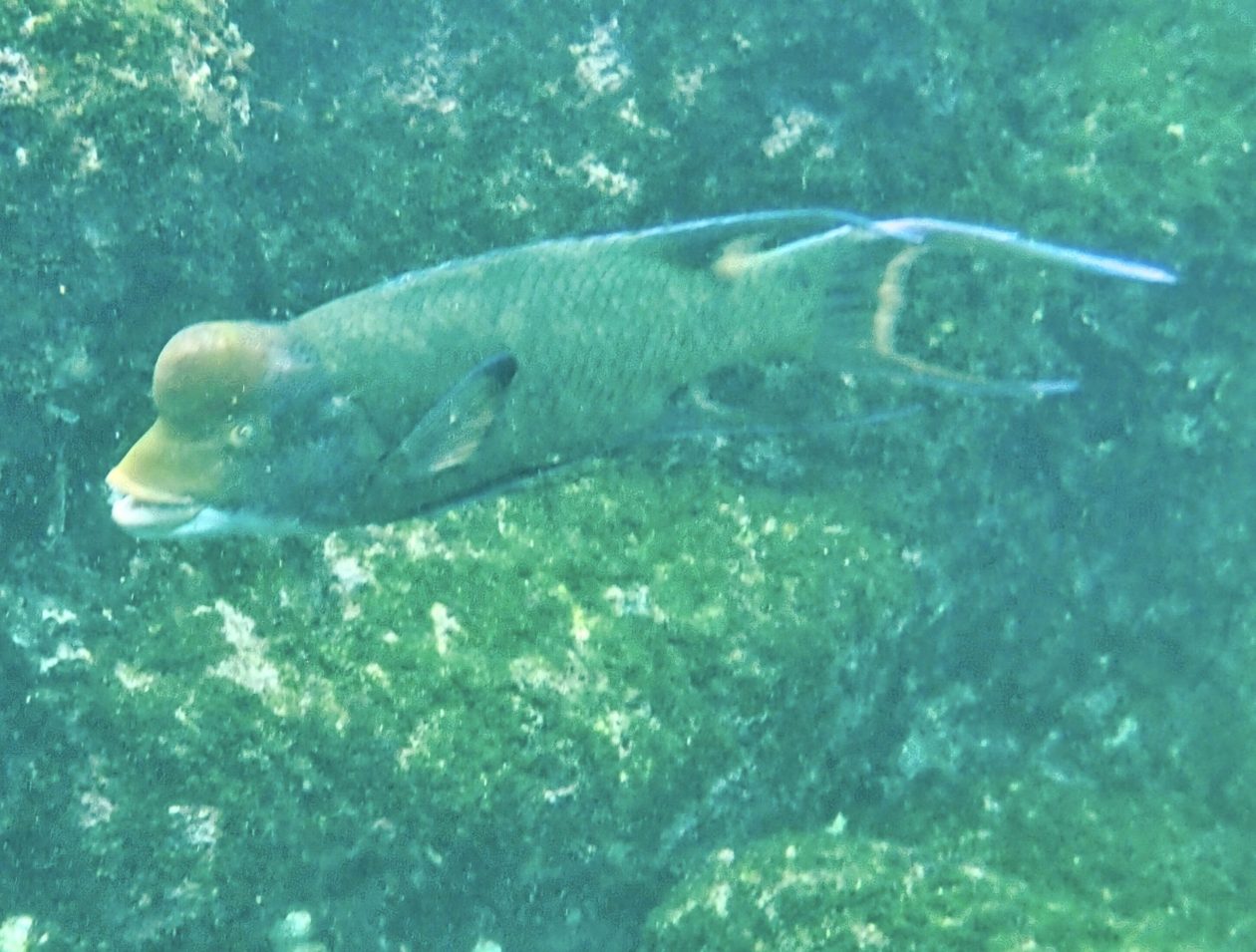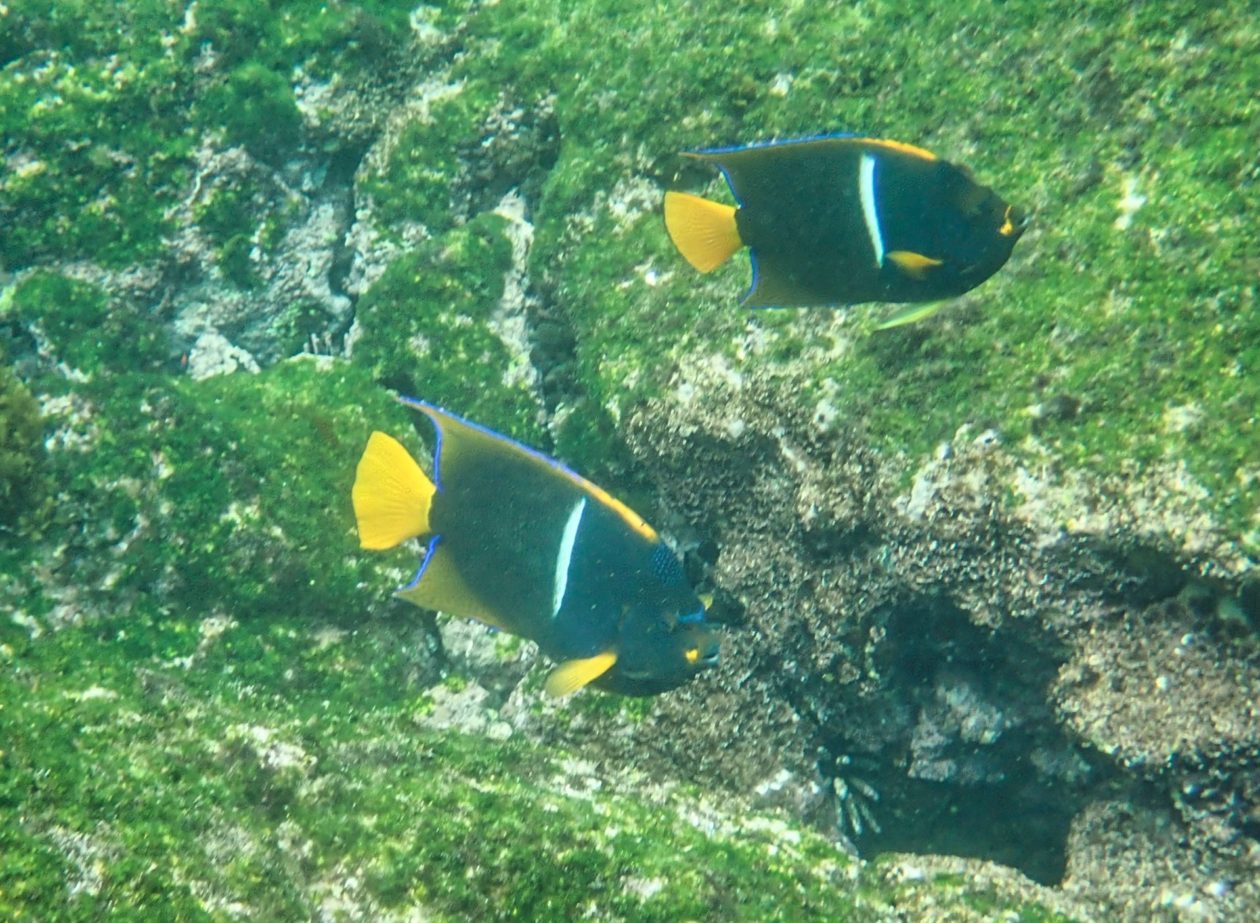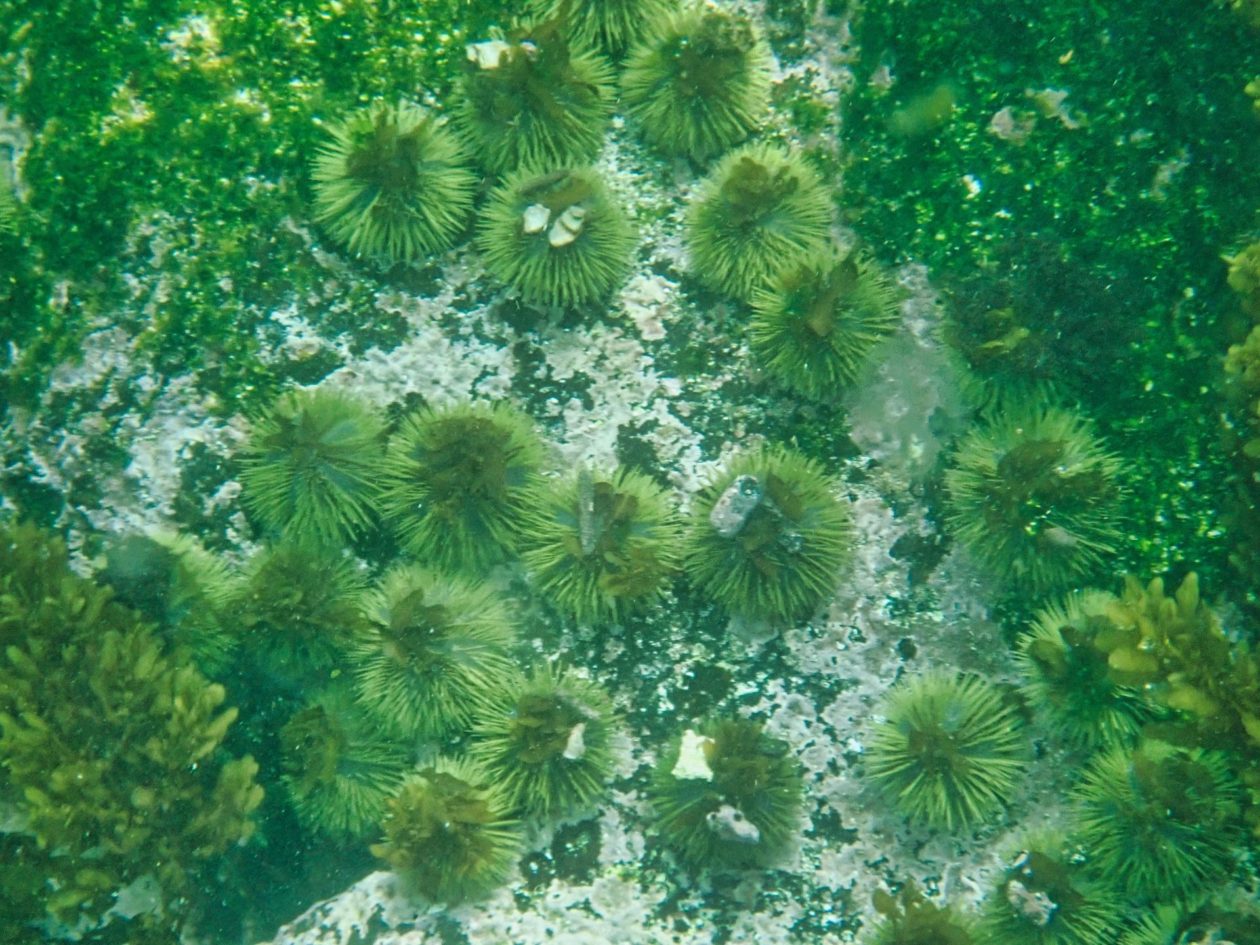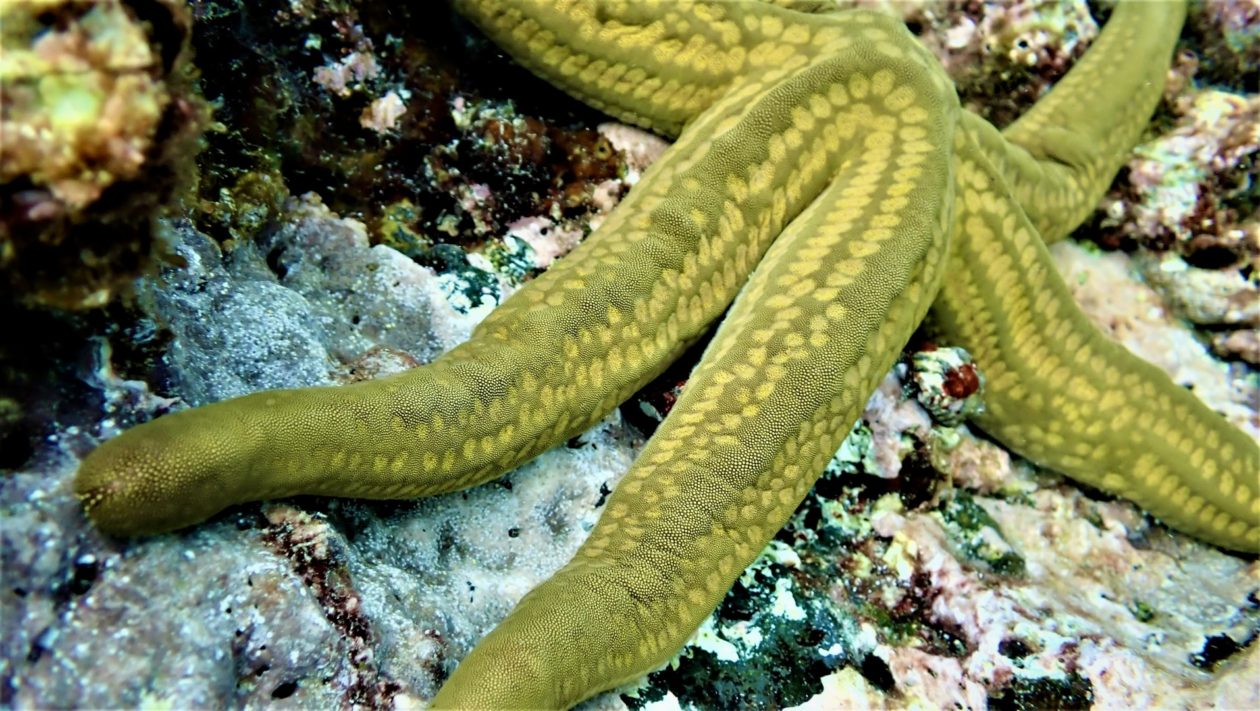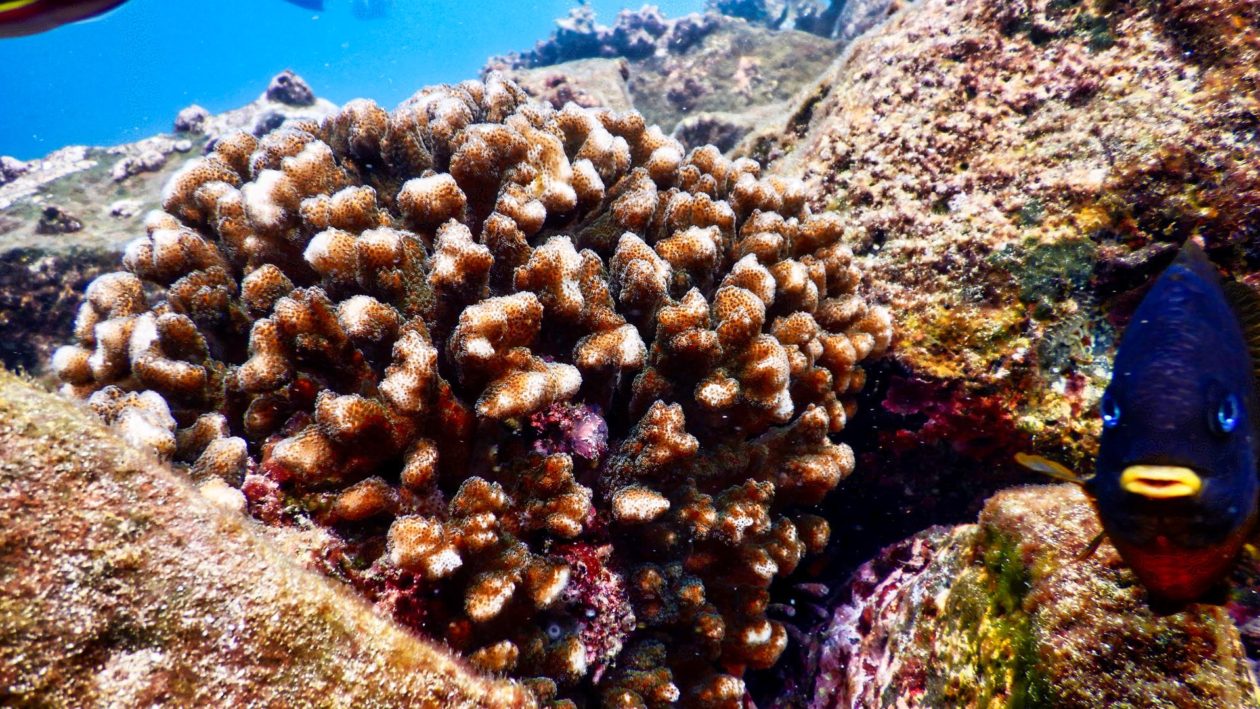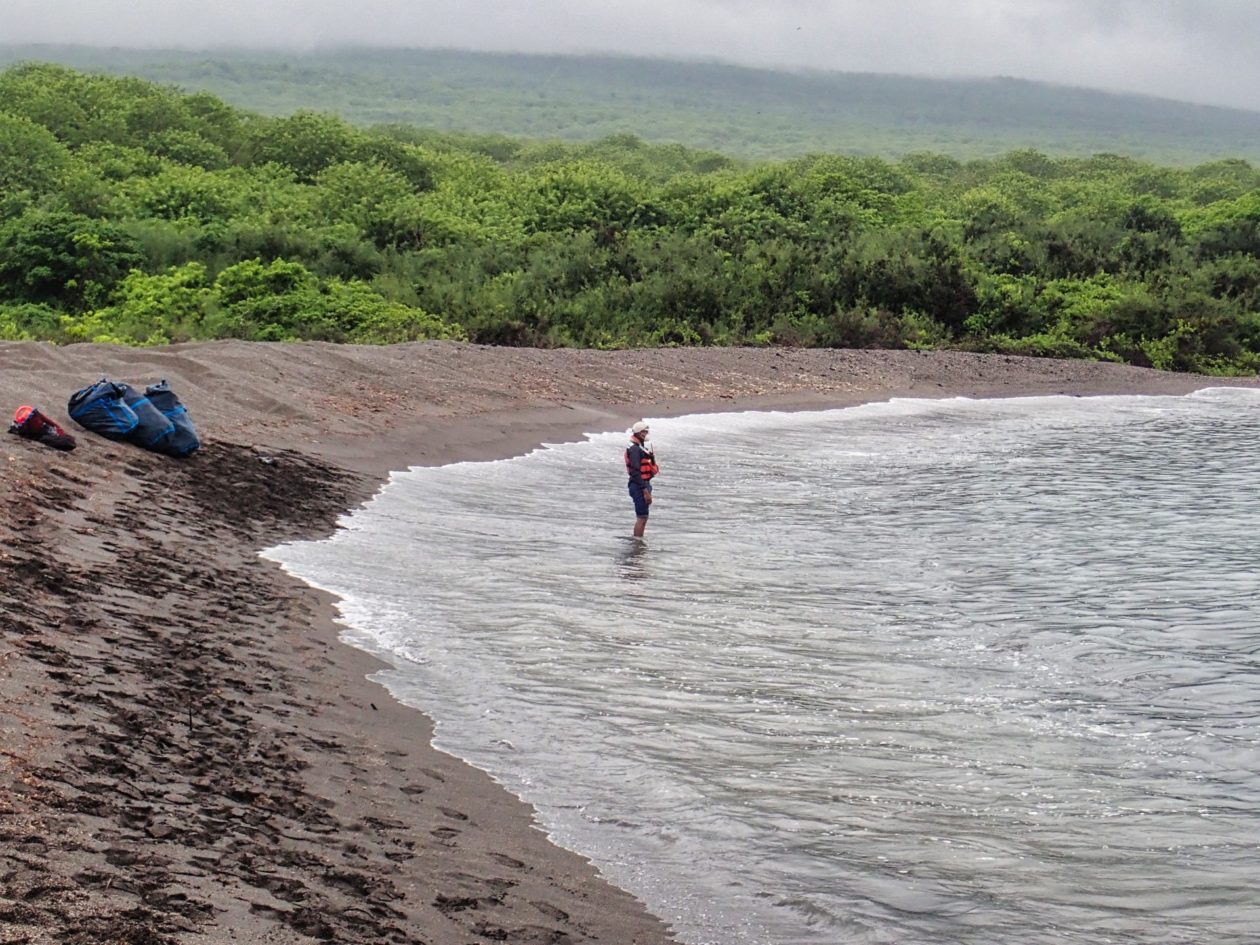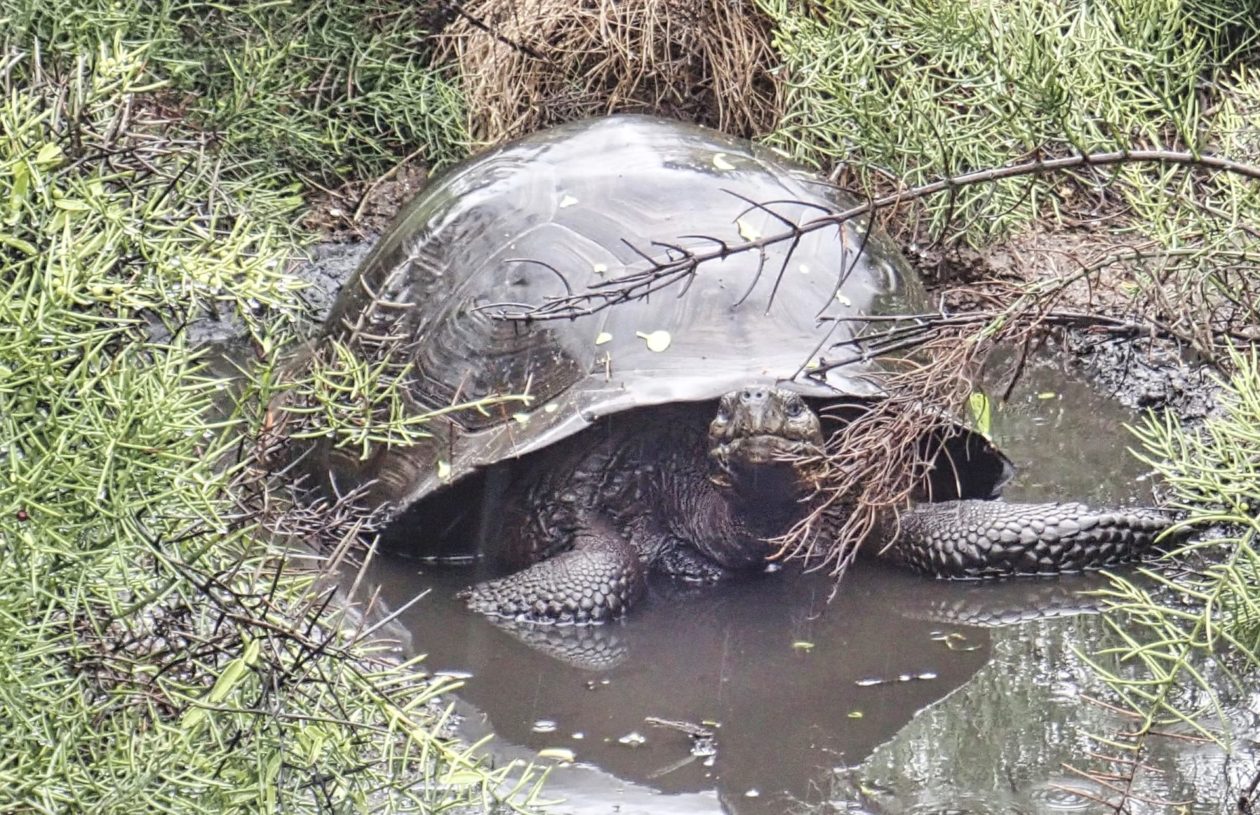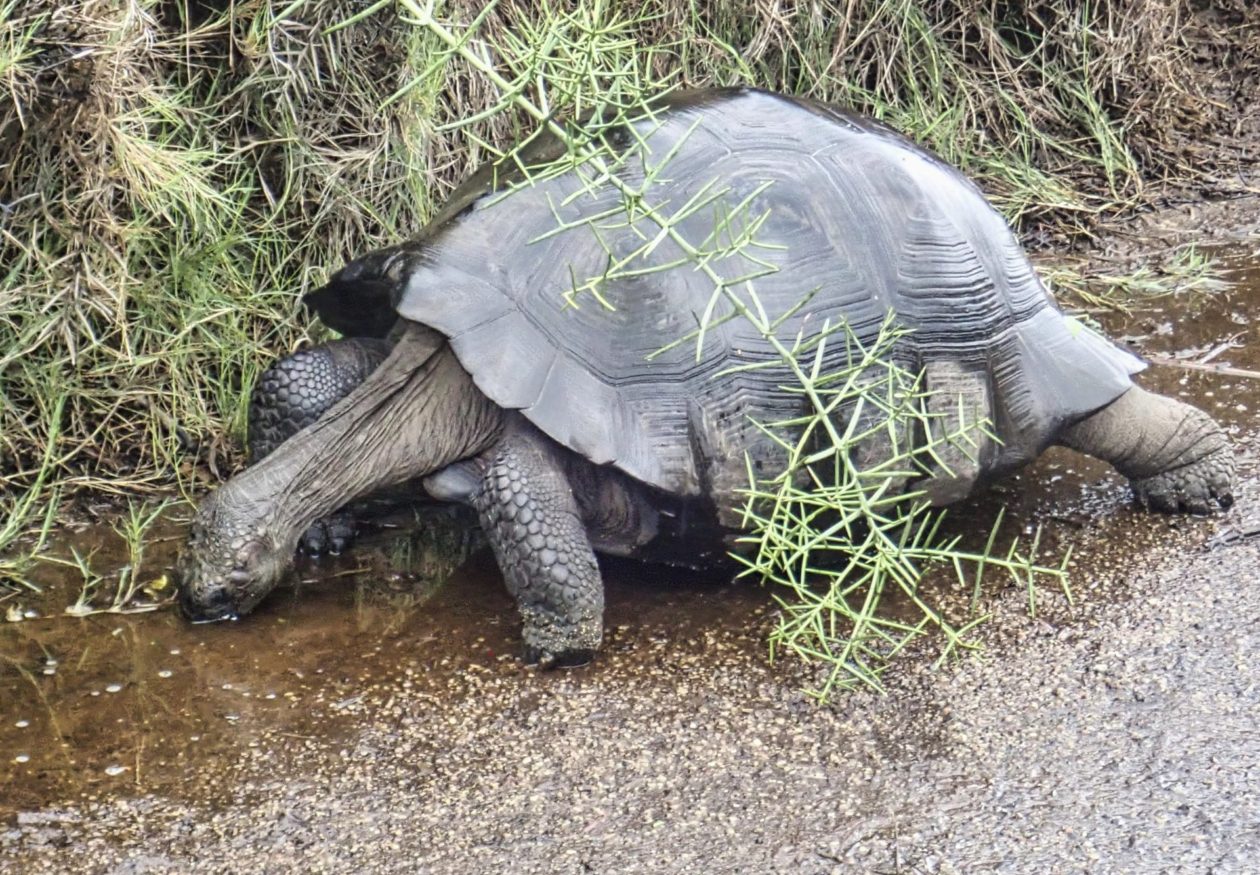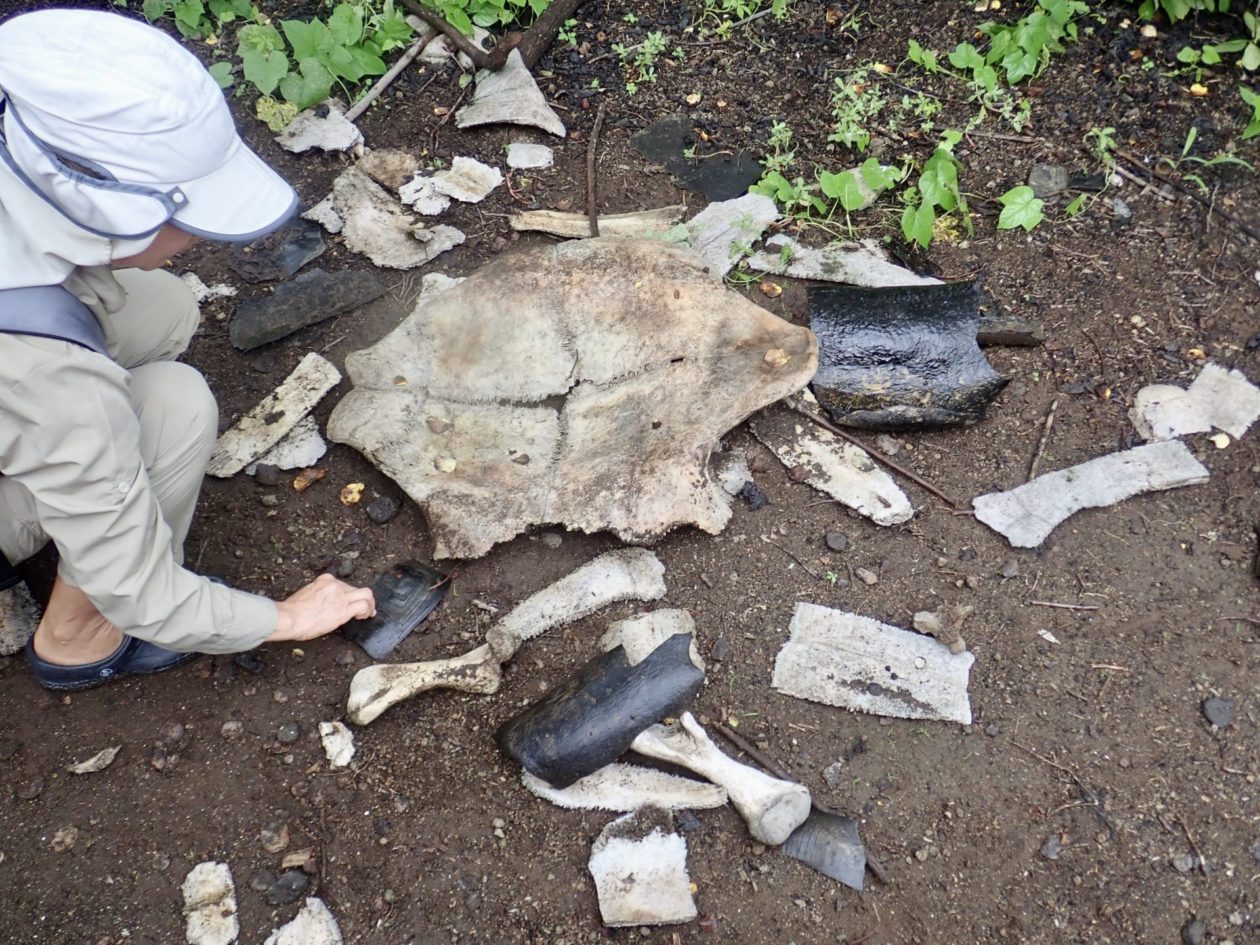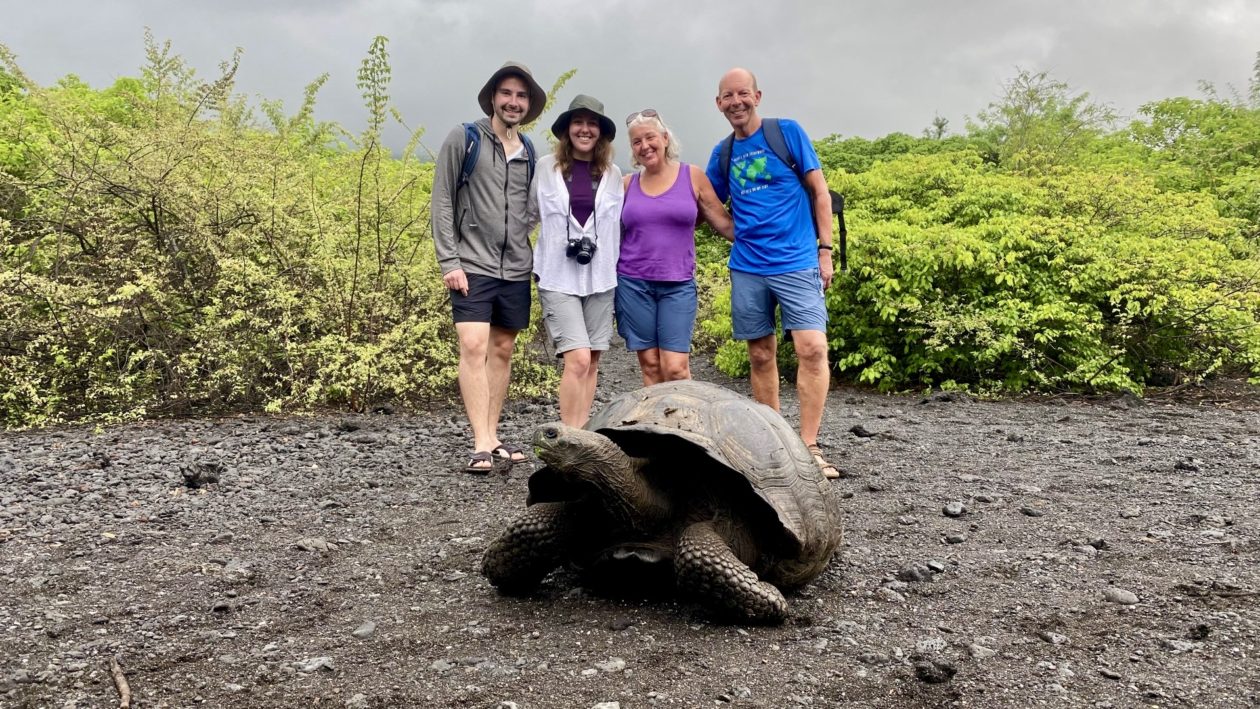- Start of trip and Quito
- Flight to Baltra and underway — our Galapagos adventure begins!
- Española Island, Galapagos Islands
- Floreana Island, Galápagos Islands
- Isabela Island, Galápagos Islands
- South Plaza Island, Galápagos Islands
- Santa Cruz Island, Galápagos Islands
- A quick stop in Lima, Peru
- Ollantaytambo, Peru
- Machu Picchu — we finally got here!
- Back to Cusco, Peru
- Back to Lima and end of trip
Today we were on the island of Isabela. It is the largest island in the Galapagos and the most recently active (the last eruption was in 2015). It’s actually shaped like a seahorse and is really the amalgamation of five coalesced volcanos. Some of these volcanos reach above the cloud cover and there tends to be lush vegetation. Other parts of the island still have relatively new lava fields and the surrounding soils haven’t developed enough nutrients to support much vegetation. In fact, our first stop was at Moreno Point which at first glance looks like a lifeless lava flow. But as we walked farther, we started to see a number of lagoons with anywhere from fresh to brackish water. We were amazed by the amount of life that we saw there, including a flamingo, a number of sea turtles, some grouper, and even a white tipped shark! As we were leaving we saw some Galapagos penguins (the second smallest in the world — only the fairy penguins in Australia and New Zealand are smaller). We also saw a flightless cormorant, an interesting adaption where the smaller wings are now used for swimming. They dive down to 60 feet to catch fish!
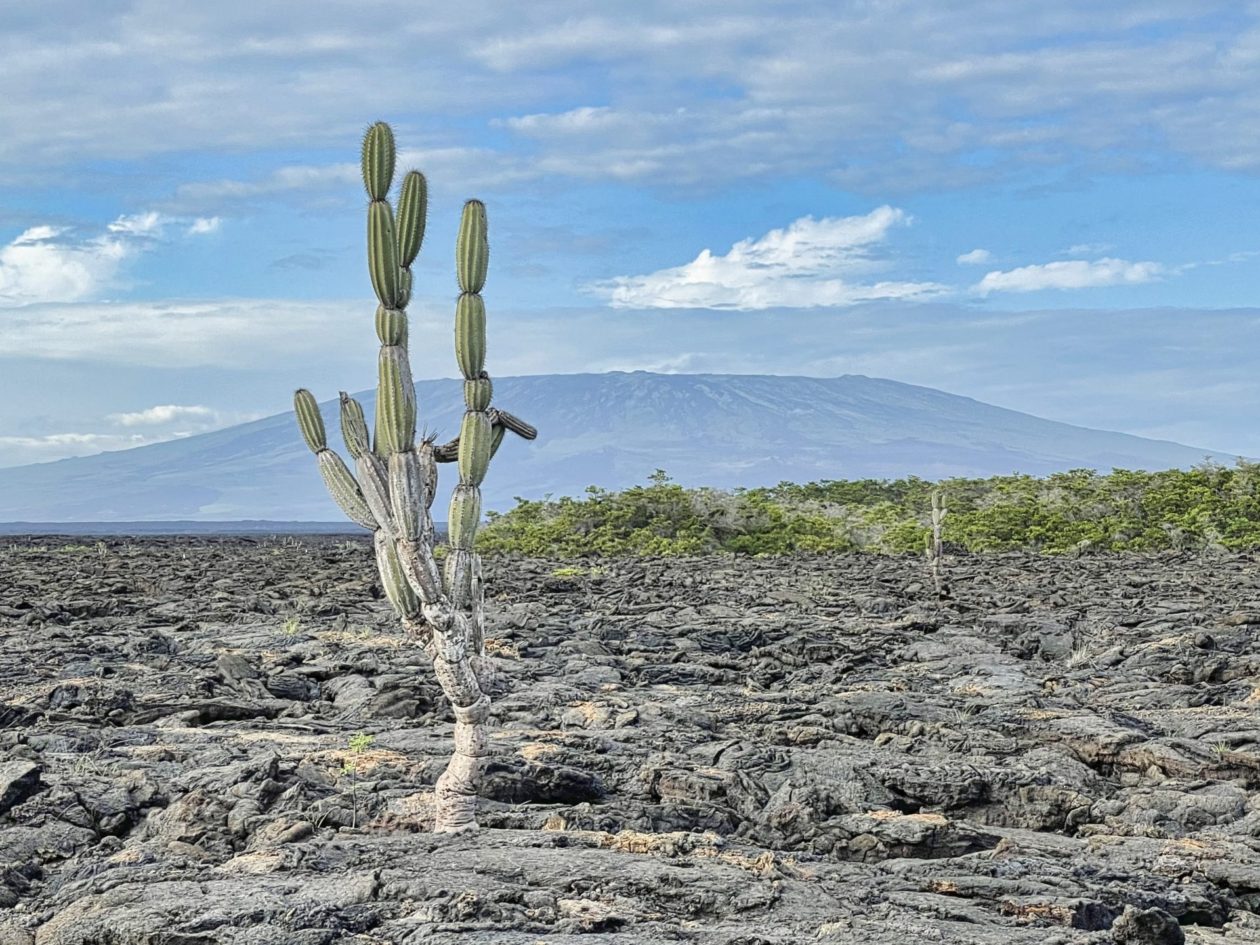
As we did off of Floreana Island (around Champion Island), we did another “deep snorkel” off of the Zodiac boats into about a 2 knot drift current. But unlike Floreana, the water was crystal clear. This had to be the best day of snorkeling that I ever have experienced. Because of all the sea grasses and algae on the bottom, it is a favorite feeding area for both sea turtles and marine iguanas — and we saw lots of both. There were also a lot of sea lions frolicking around as well. We even has some Galapagos Penguins zoom by. And, of course, there were tons of fish. While some areas were pretty tough for snorkeling because of the waves and surge, this was a totally amazing experience — certainly the best memory to date!
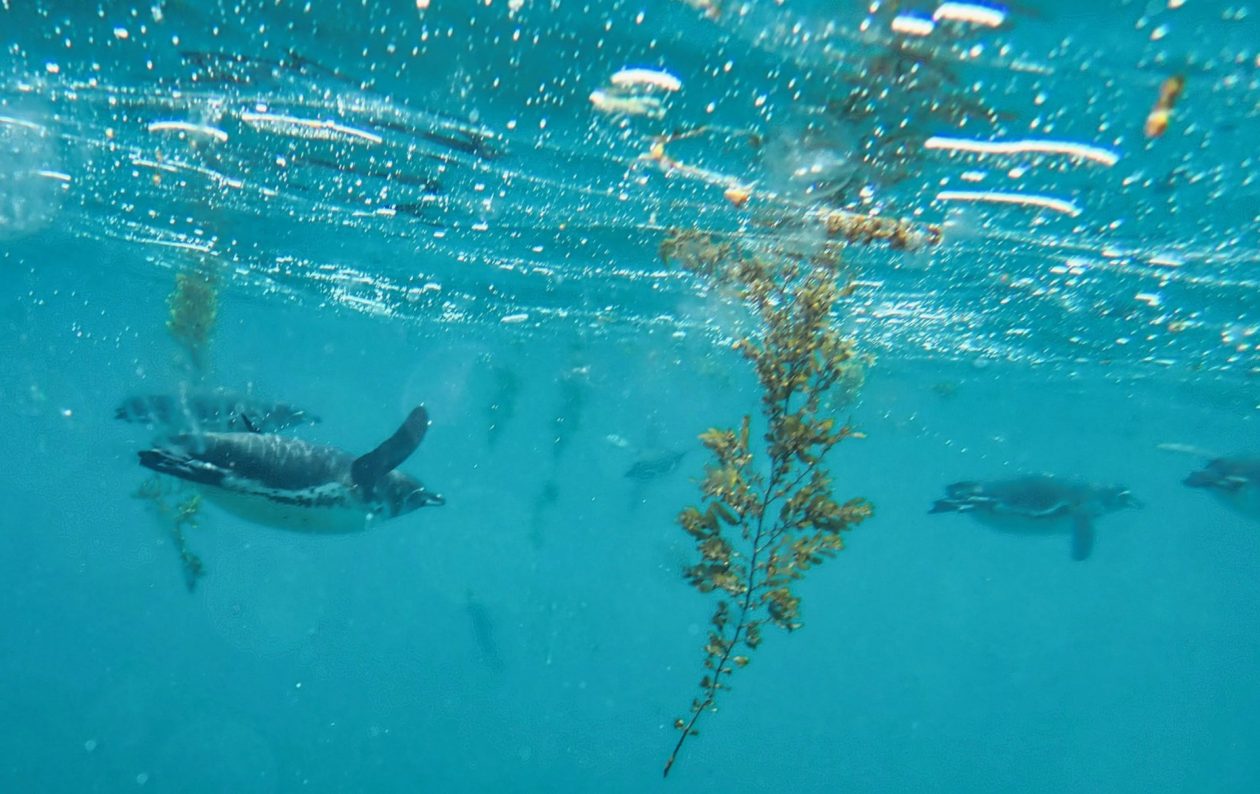
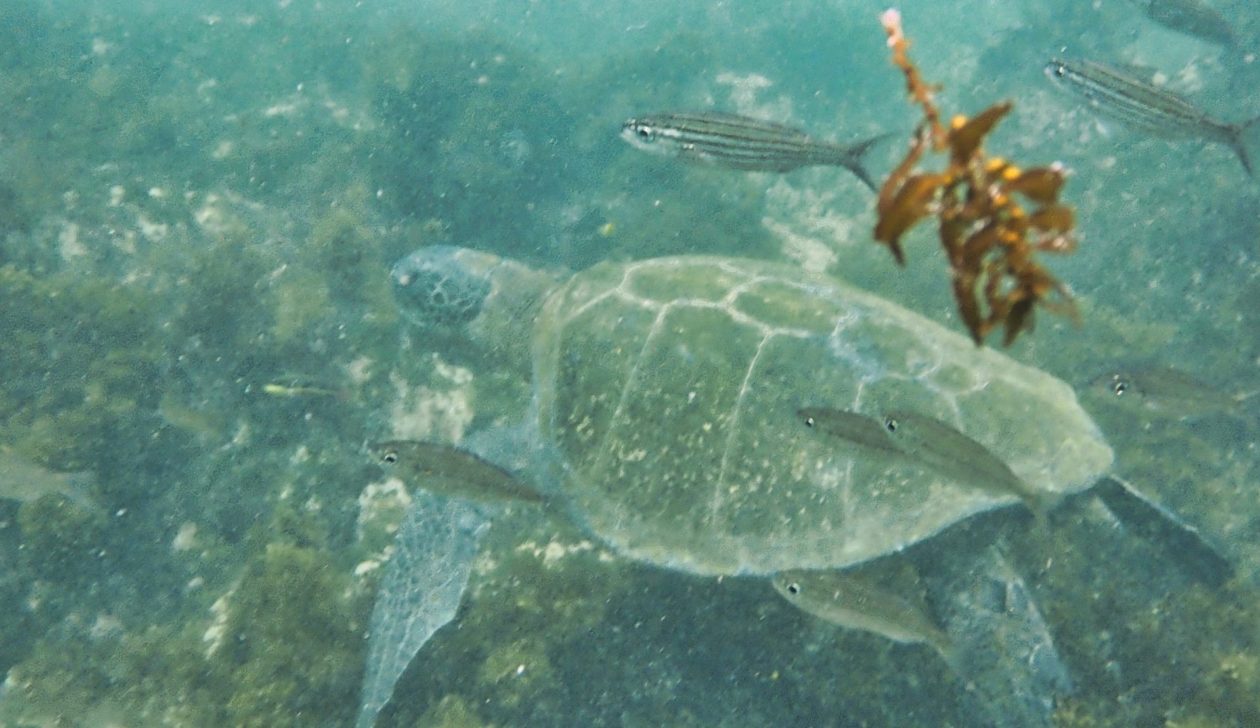
From there we went to Urbina Bay. When I said diverse, here was a clear example. This area was lush with vegetation and it started to pour! We were rewarded by seeing a large number of Galapagos tortoises, some smaller ones probably in their 20s and larger ones over 100 (tortoises here can live up to 200 years!). Most of these tortoises come down from the highlands to this area by the shore to eat, drink, and lay their eggs. They weren’t really afraid of us, but some were a little shy. Conservation efforts have helped bring the population from around 3000 in the 1970s to over 20,000 today. It’s actually the old whaling ships that were responsible for the decline. Since tortoises could go months without food or water, they were convenient to capture and bring aboard ship, and then butcher when you wanted fresh meat. Anyway, this was a real treat. By the way, Isabela has more tortoises than all the other islands combined. Tomorrow we are off to Fernandina and a quick return to Roca Point here in Isabela (on top of the seahorse’s head)
